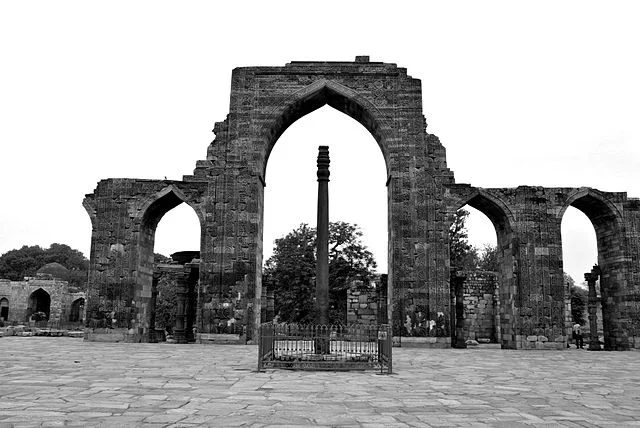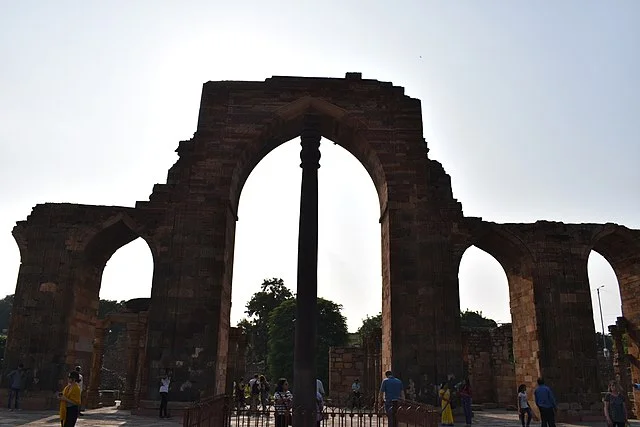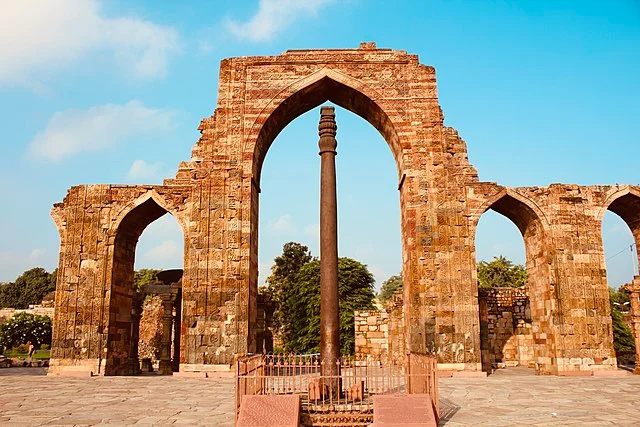The Iron Pillar of Delhi stands as a testament to ancient Indian metallurgy. Located in the Qutb complex, this pillar has fascinated researchers and historians for centuries. It measures over 7 meters in height and weighs approximately 6 tons. Despite being over 1,600 years old, the pillar shows remarkable resistance to rust, which has contributed to its fame.
Get your dose of History via Email
Historical Background

The Iron Pillar of Delhi was likely constructed during the reign of Chandragupta II (AD 375–415), a ruler of the Gupta Empire. The inscription on the pillar, written in Sanskrit, praises the achievements of a powerful king, generally identified as Chandragupta II. Originally, the pillar was erected as a victory monument in central India before being relocated to its current position in Delhi.
Metallurgical Significance

The pillar’s corrosion resistance has drawn significant attention. Researchers have studied its composition and production methods to understand why it remains rust-free. The iron used in the pillar contains high levels of phosphorus, which has contributed to its durability. This high-phosphorus content likely resulted from ancient iron-making techniques that did not involve modern slag removal processes. These methods produced a layer of passive rust, which protects the pillar from further corrosion.
Religious and Cultural Significance
Inscriptions on the Iron Pillar suggest that it may have been dedicated to the Hindu god Vishnu. The pillar symbolized the strength and stability of the Gupta Empire. Over time, its significance has evolved, with modern visitors often associating it with India’s rich heritage and ancient technological achievements.
Scientific Investigations
Numerous scientific studies have been conducted on the Iron Pillar to determine the reasons for its remarkable preservation. In the 20th century, experts found that the protective film on the surface of the pillar was made of crystalline iron hydrogen phosphate. This layer is responsible for preventing further oxidation and rusting. The pillar also demonstrates early advances in large-scale metalworking, as creating such a massive structure without modern technology would have required advanced knowledge of iron production.
Conclusion
The Iron Pillar of Delhi remains an iconic structure, symbolizing both ancient India’s technical achievements and its cultural heritage. It serves as an enduring reminder of the skills developed during the Gupta period and continues to inspire curiosity in historians and scientists alike.
Source:

